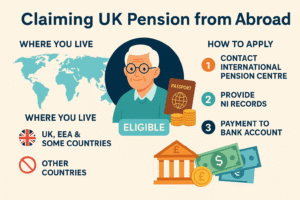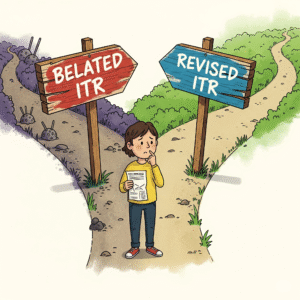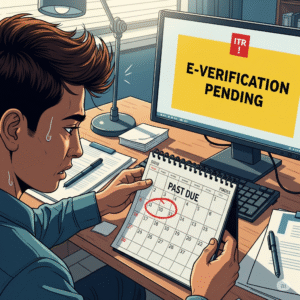As we head into the new year, a familiar question pops up for millions across the UK: “What’s happening with my energy bills?” Fortunately, there’s some welcome news on the horizon. The UK’s energy regulator, Ofgem, has announced its UK Energy Price Cap Adjustment for January 2026, bringing a slight reduction in energy costs for many households.
This cap sets the maximum price that energy suppliers can charge for each unit of gas and electricity on a standard variable tariff. While it’s not a deep price slash, it’s a step in the right direction after years of volatility. Let’s break down what these changes actually mean for your wallet.
What’s Changing? A Breakdown of the January 2026 Price Cap
The biggest takeaway from the latest Ofgem update is a small drop in the unit cost of energy. However, the standing charges—the fixed daily amount you pay just to be connected—remain largely unchanged.
Here’s a quick look at the new rates compared to the previous quarter:
- Electricity Unit Rate: Decreasing from 27.35p to 25.90p per kWh.
- Gas Unit Rate: Dropping from 7.42p to 6.89p per kWh.
- Electricity Standing Charge: A tiny adjustment from 53.01p to 52.40p per day.
- Gas Standing Charge: A minor dip from 29.11p to 28.85p per day.
In simple terms, the cost per unit of energy you use is dropping slightly, but the fixed daily cost to have that energy supplied remains high. This means your final bill is still heavily influenced by these standing charges.
The Real-World Impact: What This Means for Your Annual Bill
So, what does this all add up to?
According to Ofgem’s calculations, a typical household using an average amount of energy will see its annual bill fall from £1,834 to approximately £1,690 per year. This £144 annual saving is a positive development, but it’s important to remember this figure is an average.
Your actual bill will depend entirely on your consumption. Households with higher energy usage or those living in older, less insulated homes may not feel the benefit as strongly. The price cap protects you from being overcharged on a specific type of tariff; it doesn’t guarantee a low bill.
Beyond the Cap: Smart Strategies to Lower Your Bills Further
The price cap shouldn’t be your end goal. It’s a safety net, not the best deal on the market. To truly take control of your energy costs, you need to be proactive.
Don’t Just Stick to the Cap
The cap applies to Standard Variable Tariffs (SVTs). You are always free to shop around. Look for competitive fixed-rate deals, which can lock in a price for 12 months or more, giving you certainty and often a better rate than the cap.
Embrace Energy Efficiency
Lowering your usage is the most effective way to cut costs. Simple changes can make a huge difference:
- Switching to energy-efficient LED bulbs.
- Improving your home’s insulation.
- Using smart thermostats to control your heating more effectively.
- Turning off appliances at the wall instead of leaving them on standby.
Watch for New Tariff Models
Some suppliers are now offering innovative “time-of-use” tariffs. These charge you less for electricity used during off-peak hours (e.g., overnight). If you can shift your usage of high-demand appliances like washing machines or EV chargers, you could save significantly.
What’s Next? The Outlook for Energy Prices in 2026
Ofgem reviews the price cap every three months, so this isn’t the final word. The next adjustment is scheduled for April 2026. Future rates will continue to be influenced by global wholesale energy prices, geopolitical stability, and the UK’s progress toward its climate goals.
For now, the best strategy is to stay informed, regularly compare tariffs, and invest in making your home as energy-efficient as possible.
What are your top tips for managing energy costs during the winter? Share them in the comments below to help other readers!
If you found this guide useful, please share it with friends and family. Explore our other articles on UK finance and technology to stay ahead.
Frequently Asked Questions (FAQs)
Q1: What exactly is the UK Energy Price Cap?
A: It’s a limit set by the regulator, Ofgem, on the maximum amount suppliers can charge for a unit of energy and the daily standing charge on a standard variable tariff. It’s designed to protect customers from paying excessively high prices.
Q2: So, will my energy bill actually go down in January 2026?
A: Most likely, yes. The average household should see a decrease. However, since standing charges are still high, your final saving depends entirely on how much energy you use.
Q3: How does Ofgem decide on the price cap level?
A: Ofgem calculates the cap by analyzing a range of factors, including wholesale gas and electricity costs, the costs of maintaining the energy network, and government policy costs. It updates this quarterly to reflect market changes.
Q4: Can I switch energy suppliers if I’m on a capped tariff?
A: Absolutely. The price cap only applies to standard variable tariffs. You are always free to switch to a different tariff or supplier, and it’s highly encouraged to shop around for a better fixed-rate deal.
Q5: When is the next energy price cap update?
A: Ofgem reviews the price cap every three months. After the January 2026 adjustment, the next update will be announced for April 2026.














